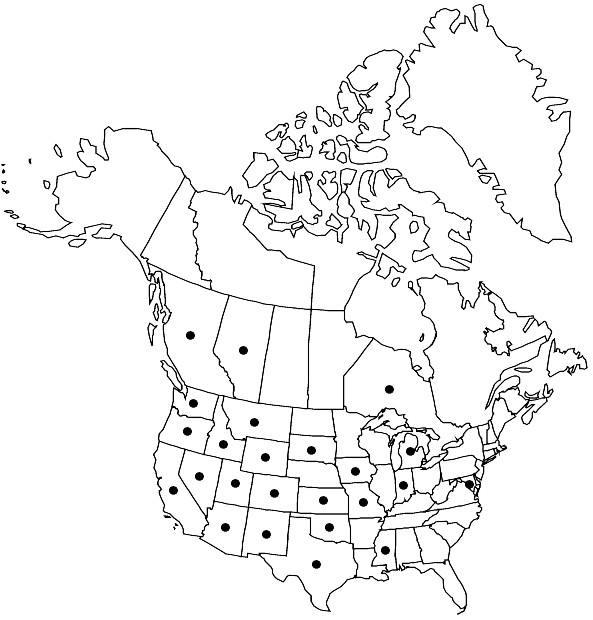Grimmia pulvinata
in J. E. Smith et al., Engl. Bot. 24: plate 1728. 1807,.
Plants in hemispherical hoary cushions, grayish green. Stems 1–3 cm, central strand present. Leaves flexuose when dry, erect when moist, lanceolate, 1–1.7 × 0.3–0.6 mm, keeled, margin recurved on both sides nearly from base to apex, rarely only one margin recurved, abruptly contracted into short to long, smooth to denticulate awn, costa weak proximally, projecting on abaxial side; basal juxtacostal laminal cells quadrate to short-rectangular, thin-walled; basal marginal laminal cells quadrate to short-rectangular, thin or thick-walled; medial laminal cells roundedquadrate, slightly sinuose, thin-walled; distal laminal cells 1-stratose, margins 2-stratose. Gemmae absent. Sexual condition autoicous. Seta arcuate, 3–4 mm. Capsule usually present, exserted, ellipsoid to obloid, brownish and ribbed when empty and dry, exothecial cells thin-walled, annulus present, operculum rostrate, peristome teeth reddish, fully-developed, papillose. Calyptra mitrate.
Habitat: Various substrates, from acidic to basic rock, old mortar, tree trunks
Elevation: low to high elevations (0-3000 m)
Distribution

Alta., B.C., Ont., Ariz., Calif., Colo., Idaho, Ind., Iowa, Kans., Md., Mich., Miss., Mo., Mont., Nev., N.Mex., Okla., Oreg., S.Dak., Tex., Utah, Wash., Wyo., Mexico, South America (Argentina), South America (Chile), South America (Uruguay), Eurasia, Africa, Pacific Islands (New Zealand), Australia
Discussion
Grimmia pulvinata is the most common species of the genus. It has a nearly cosmopolitan distribution, and is a pioneer on various substrates, even on the trunks of trees. However, in the eastern part of North America, it occurs only in a few scattered localities (H. A. Crum 1977). It is easily recognized by its neat hemispherical cushions with abundant capsules. It may be confused with G. orbicularis, which grows in similar habitats and is known to co-occur with G. pulvinata. However, as discussed under G. orbicularis, it differs in gametophytic as well as sporophytic characters. Some forms with more acuminate leaf tips may be confused with G. trichophylla, but the thin-walled, short-rectangular basal cells and the small, rounded mid leaf cells distinguish G. pulvinata.
Selected References
None.